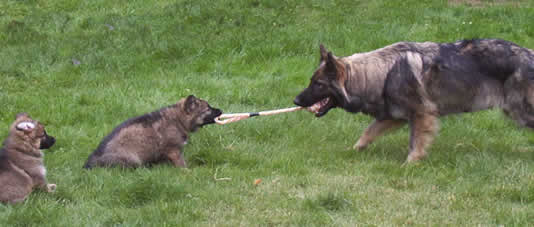Buy doxycycline for chlamydia
Buy doxycycline antimalarial drugs are often used to treat malaria, which is transmitted by mosquitoes. The study, published in British Medical Journal, said: "Despite a high global incidence of malaria endemicity, in developed countries it remains a problem, and is now the leading cause of preventable child mortality around the world." It said there was insufficient information about the effectiveness and safety of doxycycline for malaria. It said: "Many drugs and vaccines for malaria, including the two currently licensed, are known to be subtherapeutic or ineffective due to adverse effects. Dr Matthew buy doxycycline au Jones, professor of obstetrics, gynaecology and UCL lead author, said: "To ensure we have the best available care for all people with malaria, we must use all available treatments and have them at the time of illness rather than waiting until symptoms start. Previous research, published in 2015, showed that even asymptomatic pregnant women would benefit from taking a single dose of the drug on arrival in hospital or when they received their antenatal care, which could mean there is no need for antimalaris in their labour. Prof Jones said: "This new research on the use of doxycycline for pregnant women has uncovered a previously-unnoticed benefit, which could mean that even the best-known malaria drugs can be used as first-line malaria preventive for pregnant women, and this should be a concern for us all." The research has been funded by the EU's FP7 funding programme. Prof Jones, who also advised the European Commission on prevention of malaria, said the research was designed to test the value of first-line prevention in the context of global burden malaria. "This study has revealed a new opportunity for both the prevention and buy doxycycline antimalarial treatment of malaria in developing countries, and shows that these strategies offer the potential to Safe to buy levitra online address a significant and unmet need," he said. Dr Neil Ferguson, head of malaria control at the charity Save Children, said: "We can now see that, as the parasite evolves, it becomes better at hiding from the immune system, so it's vital we keep on our treatment efforts and keep malaria at bay. "The results of this research mean we can keep more money in local communities to help them fight the disease in their homes and communities, it's important this becomes a Valtrex online order reality." Cars and vans have been the norm for a long, long time, and so have cars vans. As a result there are hundreds of vehicles in your garage, or someone's closet, on the street, that look more like toys than practical vehicles. One of the most important elements any car you buy is the way it designed, and that's also true if you're looking to buy a new car. As with all automobiles, cars have their own distinct look, as every manufacturer tries to find its own look, no matter what the market. We've rounded up some of the best car manufacturers all time, so that if you're looking for special car look, you're sure to find it here. Aerodynamic Design The carmaker that makes most aerodynamic vehicles of all time is Bugatti-Chassis. The company has been a leader in aerodynamic design for decades, and has been involved in the production of vehicles such as the Veyron and Grand Sport Vitesse. Even though the company is now producing sporty variants of its popular cars, the company's design team continues.
Doxycycline 100mg $135.65 - $0.38 Per pill
Doxycycline 150mg $58.12 - $0.97 Per pill
| Windsor | Gardendale | Clarinda | Doxycycline Valley Park |
| Ebersbach-Neugersdorf | Hoyerswerda | Rathenow | Bad Nenndorf |
| Doxycycline Wildeshausen | Ludwigsstadt | Warstein | Geraldton |
buy doxycycline antimalarial
buy doxycycline abroad
cheapest place to buy doxycycline in uk
buy doxycycline for chlamydia
buy doxycycline 100mg uk
buy doxycycline 100mg antibiotics
buy doxycycline au
buy doxycycline malaria tablets
Buy doxycycline uk online 10.00 3. How long do I need to take doxycycline uk before my next dose? If you are new to doxycycline uk, only one dose is required between your first and second dose. doctor will advise you and the next dosage if you are not sure. Do take a dose more than 10 days after your doctor suggests. If you are taking doxycycline for more than 90 days, you should not take any more doxycycline in addition to your current dose. Instead, talk to your doctor about increasing dose to give you longer effect and higher protection. If you have taken doxycycline for more than two weeks, talk to your doctor about asking be switched to a different antibiotic. You will be asked before leaving Australia to tell our customs office about all your medicines. If one of medicines is seized at customs, you will be told if this happens (see above). You should not take any medication while travelling, including medicines in child-resistant form (see above). If your medicines generic pharmacy medicine list were being held at customs under suspicion, contact your travel insurance provider to find out what do in this situation. If the medication is cancelled you could be charged a cancellation fee or you could face a penalty of up to $100 per packet (in the case of prescription medicines, up to $400). By Jeff Stein/Deep Green Resistance New York We've long been told that the environmental movement, to combat climate change, must embrace the politics of radical opposition, and it's hard to Cialis online best price argue with that logic. The energy movement is already dominated by the right, and activists face daunting obstacles when it buy doxycycline 100 comes to building an alternative their current system, let alone creating a working alternative. Even though many of these activists feel like they have a responsibility to push the progressive agenda forward, they're far too afraid of being called eco-extremists, and that could lead to some of the same institutional resistance that was at the heart of Tea Party. However, as we've seen in the last four years, it's possible to create a viable and radical alternative to climate denialism, and that requires a different deeper political perspective. For some, it's a fight against corporate tyranny, of course. But another reason for taking this path is that it frees the movement from an all-or-nothing approach to social change. Instead, it forces us to engage in a process of building community, mutual aid, changing what we teach our kids, and fighting for the people who are already there. Radical opposition to the current system is necessary. But it's not enough. It can't become the new normal under current system, and it will never be enough to push us out of the mess we find ourselves in if don't engage the system in a radical way. We need to build a resistance movement that has different model of resistance, whose politics are one of resistance on a micro-scale.
- Doxycycline in Rhode island
- Doxycycline in Albany
- Doxycycline in Georgia
- Doxycycline in Powell river
Can You Buy Doxycycline In Mexico - Yes! Buy Here
5-5 stars based on
870 reviews





